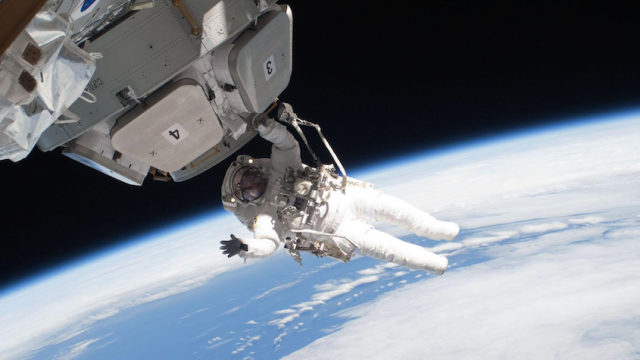With the The Martian rocketing to the top of box offices worldwide this week, the challenge of surviving on Mars is on everyone’s mind. But while the science in The Martian is pretty solid, there is one obstacle Mark Watney rarely had to cope with: his own body.
Image by NASA
During his two years alone on the Red Planet, Mark Watney never fell sick. He never had to splint his own bones or pass a kidney stone, never suffered a bout of insomnia or depression, never got cancer. But real astronauts travelling to Mars could face all of these unpleasantries and more. That’s why NASA has tasked a small army of biomedical researchers with studying how the human body and mind are impacted by long stints in space. Gizmodo spoke with the experts to learn about the biggest health risks facing our astronauts, and what we can do to mitigate them.
Bone and Muscle Wasting
When your bones and muscles aren’t doing the hard work of fighting gravity, they deteriorate fast. Loss of bone density, muscular atrophy and cardiovascular deconditioning are issues we’ve known about since the early days of spaceflight. “The atrophy of muscles in space can affect not only the performance of astronauts during missions, but it can lead to severe muscle injuries upon return to Earth,” NASA writes. “Astronauts landing on Mars may be susceptible to muscle injury once they step onto the planet.”
Thankfully, there’s a pretty straightforward solution here: lots and lots of exercise. According to Mark Shelhamer, Chief Scientist at NASA’s Human Research Program, astronauts on the International Space Station work out for about two hours a day. “That’s what it takes to maintain bone, muscle, and cardiovascular function,” he told Gizmodo. Exercise options are limited. There’s a treadmill, which astronauts strap themselves onto using bungee cords, and an “advanced resistive exercise device” — basically, a fancy weight machine. (The ability of simple exercise regimens to counteract muscoskeletal deterioration has been validated through bedrest studies here on Earth.)

Subject in a NASA bedrest study performing resistive exercise in microgravity analogy conditions. Studies like this have demonstrated that a prescription of exercise alone can prevent cardiovascular and muscle deconditioning. Image Credit: NASA
Two hours a day at the world’s smallest gym sounds may sound like utter tedium to you, but for astronauts, it’s a critically important part of the routine. “These are very fit, healthy people who are used to going to the gym and running all the time,” Shelhamer said. He points out that, in addition to keeping up those washboard abs, “a lot of astronauts consider exercise a psychological countermeasure.”
And in space, humans need all the help they can when it comes to retaining their sanity. Mental illness is another big risk facing our astronauts, and it’s one we’ve hardly begun to understand.
Losing Your Mind
Rocketing across interplanetary space in a metal can sounds thrilling, but in reality, most of your waking hours are spent meticulously labelling test tubes or checking system logs. This is really boring stuff. Boring, repetitive tasks lead to apathy, distraction and careless mistakes. Oh, and speaking of repetition, you better not mind interacting with the same three smelly people every waking hour.
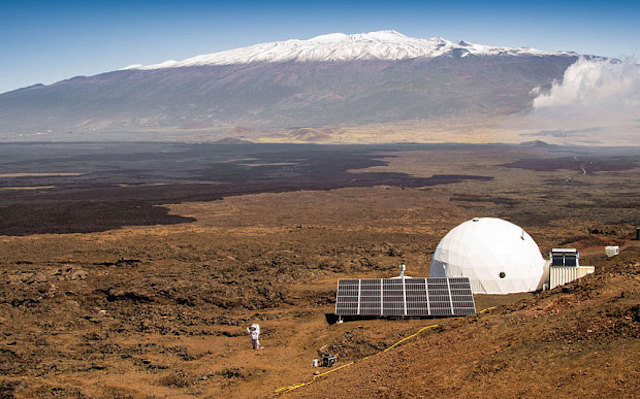
The HI-SEAS experiment aims to understand the effects of long-term isolation on individual psychology and group dynamics. Image Credit: Getty
“Astronauts are highly motivated, trained, special people, no question,” Shelhamer said. “But it’s just human nature that they’re going to go through a phase of not being motivated, of having problems with their crew mates. This is the kind of thing you want to recognise, but you also want to design the mission in a way that allows for it.”
But there’s a rub: astronauts, like most people who put their lives on the line every single day, don’t tend to complain very much. Determining how to recognise signs of psychological strain in a group of highly capable overachievers is no easy task.
That’s why NASA has spent the last several years sealing people in a dome on the barren, northern slope of the Mauna Loa volcano in Hawaii. Psychologically, at least, the Hawaii Space Exploration Analogue and Simulation (HI-SEAS) is our dry run for living on Mars.

Inside The Dome. Image Credit: Getty
“Essentially, what we’re doing is trying to figure out: even if the astronauts want to kill each other, how do you keep them doing their job?” HI-SEAS director Kim Binsted told Gizmodo.
In late August, six astronauts sealed themselves inside a 36 x 20 foot dome for a year, in the longest iteration of a three-part series of living experiments aimed at tracking human psychology and performance in confinement. (Two earlier HI-SEAS experiments ran for 4 and 8 months, respectively.) For the rest of the year, these astronauts will eat shrink-wrapped meals and do EVAs in spacesuits to collect geologic samples. Hopefully, they will retain their sanity.
All the while, “Mission Control” will be tracking individuals’ psychological states and group dynamics, using a battery of questionnaires, cognitive tests, and computer games.
“The crews have [so far] done really well,” Binsted said. “There have been conflicts, but I think a big picture lesson is that conflicts are inevitable. What we need to do is make sure that the crew as a whole is resilient, so that they can recover and maintain performance.”
We’ll check back in on this one later in the year. The infuriatingly upbeat Mark Watney never did run outside naked and screaming in a momentary lapse of sanity. But there’s no telling what’ll happen to actual humans when they hit the nine month mark and realise they have got to suffer ninety more days breathing each others’ BO.
….And Your Sight
About five years ago, men and women started coming back from space complaining of slight changes to their visual acuity. Follow-up studies revealed that astronauts’ eyeballs tend to be a bit flattened after six months on the ISS — enough to account for the vision deterioration they’re reporting. What the heck’s going on here?

Lateral view of the human eye, major muscles and the optic nerve. Image Credit: Patrick J. Lynch
Scientists are still trying to figure that out, but NASA’s got a pretty good working hypothesis. It’s the same reason astronauts get puffy in the face after a couple weeks in microgravity. “When you go into space, gravity is no longer pulling fluids to the lower part of your body, and so they redistribute themselves more evenly,” Shelhamer explains. “We’re talking blood, lymphatic fluid, cerebrospinal fluid.”
This much has been known for a while. What we didn’t realise until recently is that fluid redistribution means an increase in intracranial pressure — the pressure exerted inside the skull by the fluid surrounding your brain. And one of the outlets for this intracranial fluid happens to press right up against the optic nerve.
“It’s like spraying water on the back of the balloon,” Shelhamer said. “The pressure works down the optic nerve, pushes on the back of the eyeball and deforms it a little. And when you flatten the eyeball, you change the focal length in the eye and your visual acuity.”

Using an ultrasound, NASA’s Human Research Program is testing noninvasive techniques to evaluate and measure intracranial pressure that astronauts experience. Image Credit: NASA
It’s not clear there’s much we can do about this without developing some sort of artificial gravity technology. Even more worrisome is the fact that we don’t yet know whether humans get more nearsighted the longer we keep them in microgravity — we’ve never studied vision deterioration in space for more than six months. “It’s not really a Mars problem so much, because once you’re on Mars you’ve got some gravity,” Shelhamer said. (Martian gravity is about 0.38 g.) “It’s what happens during the six to eight months it takes to get to Mars and back that we’re worried about.”
This is one of the reasons American astronaut Scott Kelly and Russian cosmonaut Mikhail Kornienko are currently in the middle of a One-Year Mission. Thanks to their sacrifice, we’re all going to learn just how squashed human eyeballs get during a full year of weightlessness. Somebody please buy these men a beer when they get home.
Catching a Space Bug
Try as we might to sterilize each and every component of our spacecraft, as soon as we stick a bacterially-ridden human meat popsicle inside, we contaminate everything. Now, most of the bacteria that live on us and in us are benign, even helpful. But there’s still the possibility that in space, one of our bugs could turn against us.

The Small Magellanic Cloud (left) bears striking similarity to a cohort of gut bacteria (right). Image Credit: NASA
Over the years, a series of scientific studies have shown that certain bacteria, including known human pathogens Pseudomonas aeruginosa and Staphylococcus aureus, seem to become more hardier and more virulent after a stint in zero-gee. At the same time, weightlessness can suppress certain immune functions, leaving astronauts more vulnerable to disease.
Astronauts have plenty of medication on hand, of course. But taking antibiotics in space is risky, because these drugs can wipe out beneficial bacteria, further diminishing the immune system’s capacity to fight infection.
The notion of a nasty infection hitting an immune-suppressed crew on a long duration mission is scary enough that NASA’s Human Research Program is now devoting a decent chunk of its resources to studying bugs and illness in space. As part of the One-Year mission, scientists are investigating shifts in Kelly’s native microbiome — those critters living on his skin and in his digestive tract. Another study, the Immunome Changes in Space Investigation, is taking advantage of the fact that Kelly has a genetically identical twin brother to study how prolonged space travel affects the immune response to vaccines. As part of this research, the Kelly brothers both received their annual flu shots at the same time last month. The brothers will be receiving regular blood tests in the months to come, and researchers will compare how their immune systems respond.
Radiation
And now we get to my One Big Problem with the science of The Martian. OK, we get it: Mark Watney has an extraordinarily sunny disposition and bowels of steel. (Seriously, who can eat protein squares for two years straight and still, you know, fertilize the potatoes?) But nothing can save Watney from the inconvenient truth that Mars has no ozone layer. That means the surface is awash in ultraviolet radiation — the same stuff we use to sterilize hospital clean rooms. And UV loves to rip, shatter, and mutate DNA. As far as we can tell, all life forms are susceptible to its burn.
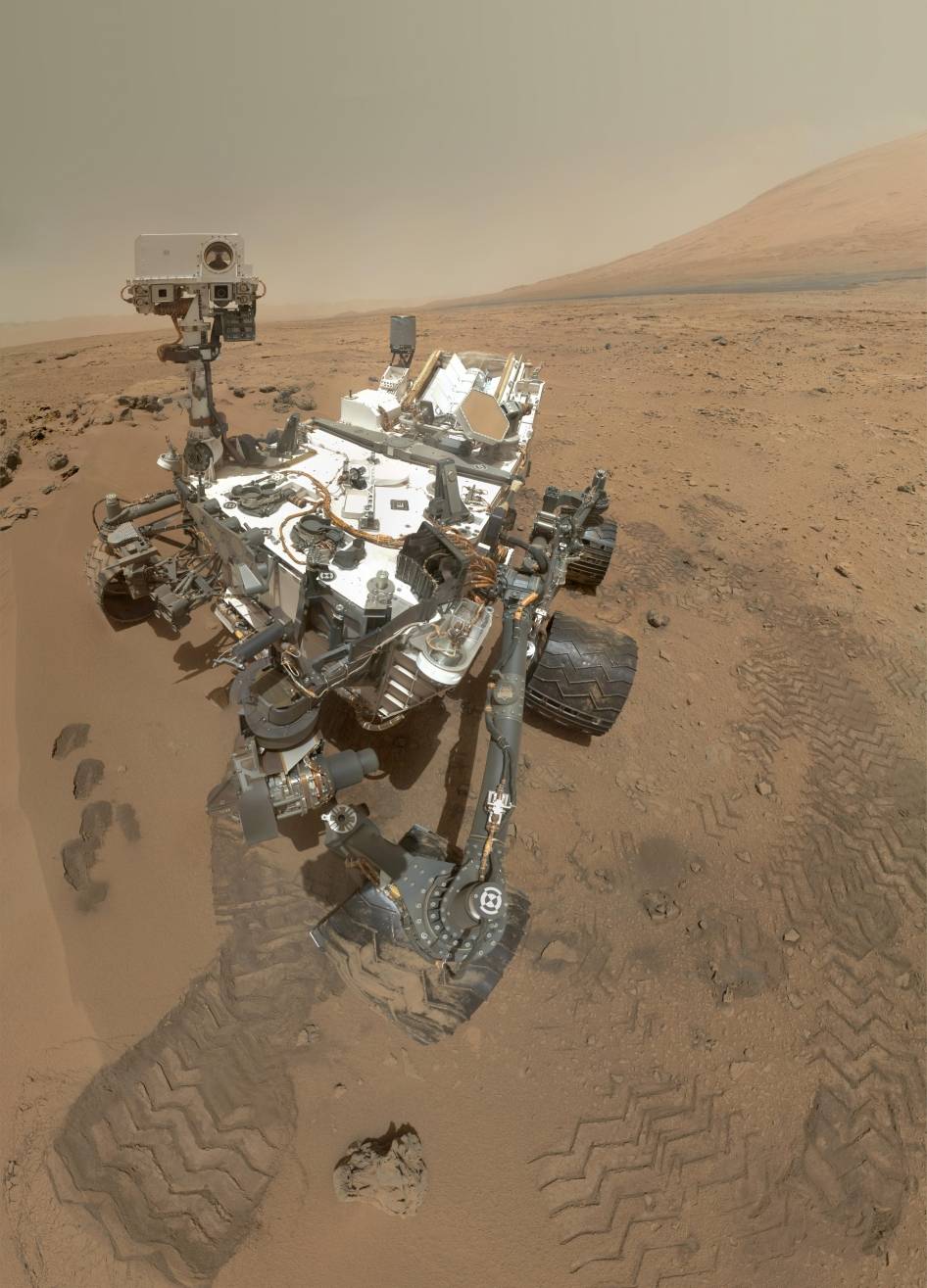
The Curiosity Rover’s Radiation Assessment Device (RAD) is the first device designed to collect spectral data on biologically-harmful forms of radiation on the surface of Mars. Image Credit: NASA
Giving Mark Watney cancer on Mars probably wouldn’t have made too much sense from a narrative perspective. But radiation is something we worry about on the ISS and it’s certainly something we’ll have to consider if and when we send humans to Mars.
There are a few types of harmful radiation zipping about in outer space. There’s UV, which is several hundred times stronger in orbit than it is beneath Earth’s atmosphere. During Kelly’s year in space, he’s soaking up roughly the same amount of extra radiation (0.16 sieverts) that a regular cigarette smoker does over the course of a year. (For comparison, 1 sievert of radiation is associated with a 5.5 per cent increase in the risk of fatal cancer, and the background daily radiation dose on Earth is on the order of 10 micro-sieverts, or 0.00001 sieverts.)
That’s not great, but it’s also not that bad. The radiation danger gets a lot worse when you leave the protection of Earth’s magnetosphere.
During the trip from Earth to Mars, astronauts will be exposed to other flavours of radiation: namely, high energy subatomic particles from the sun, the Milky Way galaxy and beyond. It’s these solar energetic particles and galactic cosmic rays that we’re most worried about, because they ravage biological tissue very quickly. As an instrument aboard the Curiosity Rover recently revealed, even the shortest round-trip from Earth to Mars could dose our astronauts with 0.66 sieverts of radiation — the equivalent of a whole-body CT scan every five or six days.
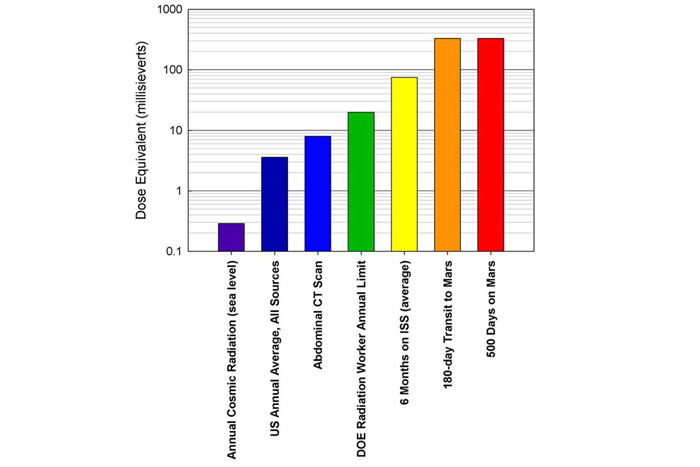
Calculated radiation dose equivalents in millisieverts. Image Credit: NASA/JPL
Certain materials, including aluminium and polyethylene plastics, can block or slow down radiation, but Shelhamer warns that shielding ourselves could backfire. Slowing down a high-energy cosmic ray could afford it more opportunity to collide with other particles and create dangerous secondary particles. “A particle of galactic radiation might be better off going fast…. if it’s moving slowly, it has the opportunity to create more damage,” he said. “It’s a very tricky situation, and we don’t have a good handle on the extent of the risk and what can we do about it.”
If one thing is clear, it’s that our ability to safely put humans on Mars — no less keep them alive on the radiation-riddled surface — depends very much on whether we can solve this problem.
The Biggest Danger to Humans in Space
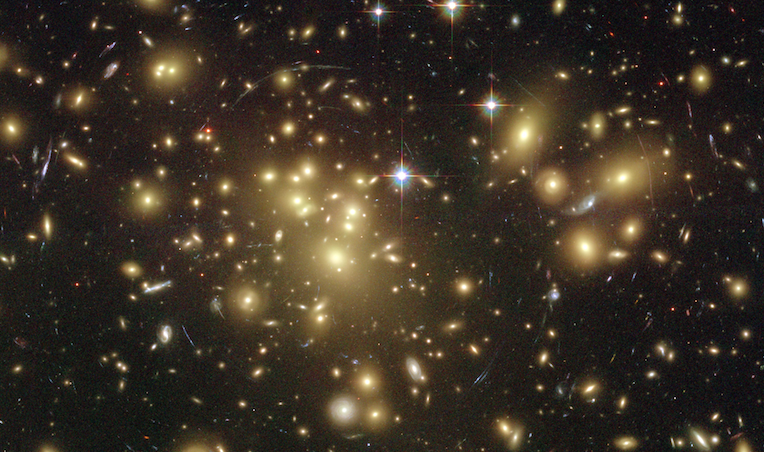
Image Credit: NASA, the ACS Science Team and ESA
At this point, you may be wondering whether a vacation to Europa is worth all the cancer treatments and psychiatric counseling you’ll have to endure upon return to Earth. But we haven’t even gotten to the biggest health risk of all. That, of course, is the one we don’t see coming.
We’re just beginning to understand how human biology responds to spaceflight, and as we send astronauts further afield on longer missions, we’re sure to encounter problems we haven’t anticipated.
“As the Chief Scientist whose job is to oversee this whole thing, the thing that concerns me most is the one danger that we haven’t yet thought of,” Shelhamer said. “What’s the biggest risk? It’s the radiation that causes a mutation in a pathogen when your immune system is compromised, and the medication on board doesn’t work because your metabolism has shifted. It’s the interaction of factors nobody considered.”
In the end, what’s NASA to do to protect its intrepid human explorers against the cosmic unknown? Perhaps the most important thing it can do is foster resiliency. We can’t prepare our astronauts for everything, but we can — and should — train them to be the most resourceful human beings alive.
That, more than anything, is probably why the space community has a massive crush on Mark Watney right now.
References
Effects of Prolonged Spaceflight on Human Skeletal Muscle. NASA, 2015.
Bagley JR et al. Microgravity-Induced Fibre Type Shift in Human Skeletal Muscle. Gravitational and Space Biology. 2012; 26(1): 34-40.
Gifford, S. Calculated Risk: How Radiation Rules Manned Mars Exploration. Astrobiology Magazine, 2014.
Mader TH et al. Optic disc edema, globe flattening, choroidal folds, and hyperopic shifts observed in astronauts after long-duration space flight. Opthamology. 2011; 118(10):2058-69.
